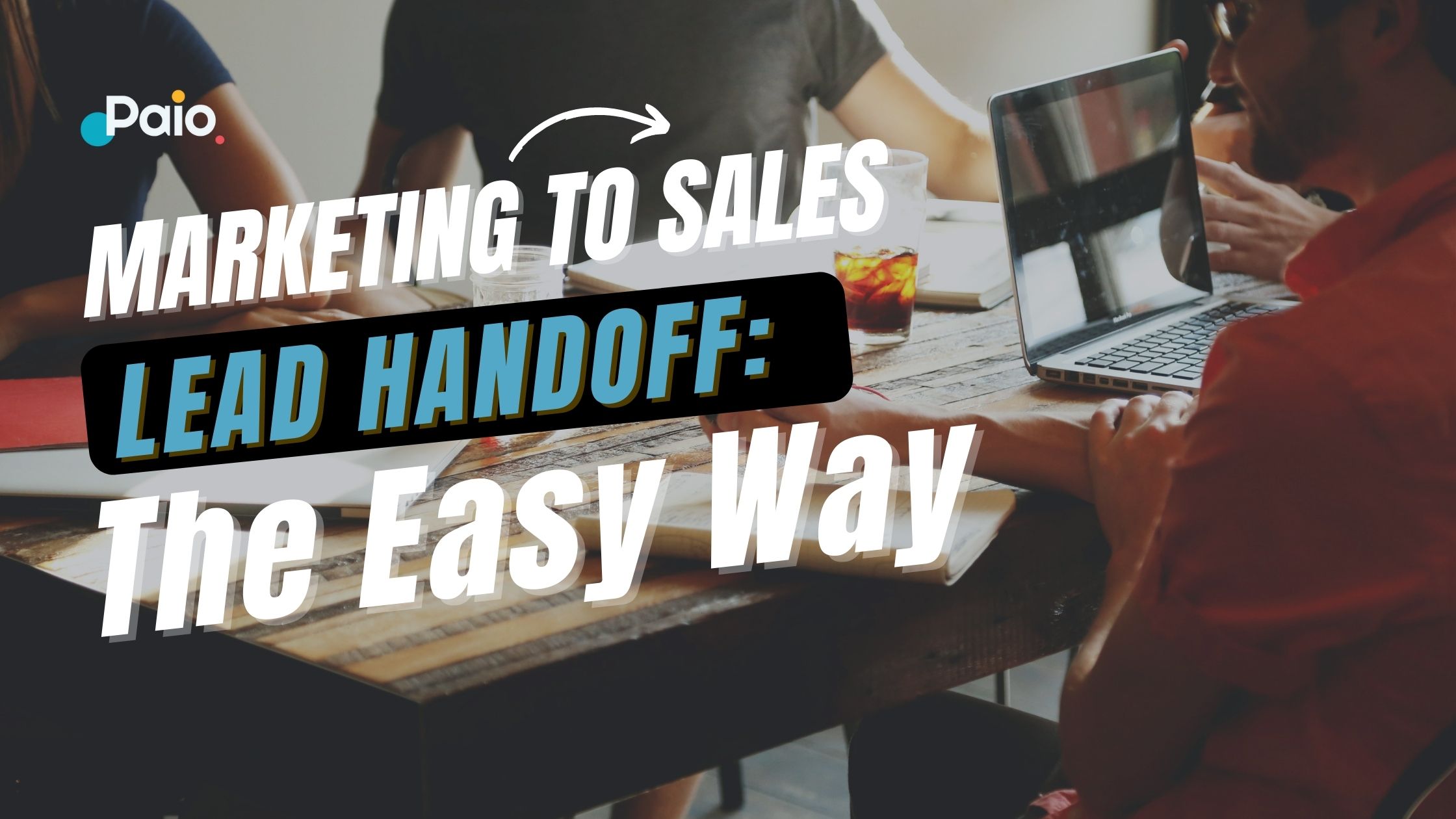Marketing and sales teams deal with leads at different customer journey stages. The marketing team is responsible for bringing traffic to the site and briefly engaging with the leads to make them sales-qualified. After this, the sales-qualified leads are handed over to the sales team for closing.
However, the chances of turning those leads into paying customers often depend on how the hand-off process is executed. Remember, prospects do not know whether they are dealing with someone from marketing or sales. So, you need to make the transition from marketing to sales very smooth to avoid losing potential customers.
This article will discuss the 6 essential rules that sales and marketing must follow to ensure a successful lead hand-off process.
-
Have a clear definition for sales-qualified leads
The guys in marketing know that their role is generating traffic and handing over sales-qualified leads to the sales team. However, confusion comes when the teams in sales and marketing have different definitions of what a sales-qualified lead is. So, the first thing you need to do to ensure smooth transitioning of leads is come up with a clear definition for sales-qualified leads.
Your sales and marketing departments need to develop easy-to-understand attributes of a sales-qualified lead. These attributes will vary from company to company. But the idea is to make them clear to both sales and marketing. For instance, one of the attributes could be; “The prospects need to have basic information about the product being sold to them before you can call them sales-qualified.”
-
Compensate the marketing team for deals that close
One of the most effective ways for ensuring marketing hands over more sales-qualified leads to the sales team is giving them some compensation for each lead that closes. This will motivate them to create informative and appealing marketing campaigns that provide leads as much information as possible before passing them over to sales.
The mistake most organizations make is not giving marketing the credit it deserves after leads are closed. All praises usually go to the sales team because they are usually at the last stage of the marketing sales funnel. However, the process starts with marketing, so they should also be appreciated every time a prospect is turned into a paying customer.
-
Attach a note to every lead in your CRM
Before passing over a potential customer to sales, your marketers need to give the guys in sales all the information they need to know. For instance, if the lead has already shared some information with the marketing team, details of these communications should be attached to avoid scenarios where the sales team has to re-ask similar questions.
Most of the marketing automation and CRM tools have the provision for attaching notes on each lead to make it easier for anyone who picks it up to know where to start. Remember, the idea is to make the transition as smooth as possible to avoid frustrating the potential customer in the process.
-
Have a clear lead scoring methodology
Lead scoring is done to determine the sales readiness of the lead. The leads that are more likely to close are given a high score, and those less likely get a lower score. If you want to have a smooth leads hand-off between marketing and sales, your leads scoring mechanism must be reliable.
The fundamental reason for lead scoring is to ensure your sales team doesn’t waste a lot of time on leads that will likely not close. So, to ensure effectiveness in the transition, both marketing and sales need to agree on the right parameters that should be used while assigning scores to the leads that are being sent over to sales.
-
Use a closed-loop process to optimize the transition.
Your sales team needs to provide feedback about the sales-qualified leads passed over to them. If the scores attached to the leads do not match the results, there needs to be a revision to the lead scoring process to make it more reliable. For instance, if the leads that were given low scores consistently performed better than those with a higher one, then a revision to the scoring mechanism has to be made.
In a closed-loop process, some of the leads are also sent back to marketing to make them sales-ready. For example, if sales cannot have a smooth conversation with the lead, probably because the timing is not right, such leads can be sent back to marketing to target them with new marketing campaigns in the future.
-
Create a standard lead follow up process
You need to create a service level agreement that requires sales to follow up leads quickly. It should also specify the number of phone calls and emails for new leads after they have been passed over to sales. Your marketing team needs to have an idea of the follow-up process for all the leads that they pass over to sales.
Having a standard follow process also makes it easier for sales because they know exactly what to do whenever a new lead is passed over to them.
Final thoughts
Having a smooth lead-off is one of the factors that determine your leads conversion ratio. Both your marketing and sales teams need to be actively involved while generating ideas of how to handle the transitioning of leads. Issues like determining the parameters for lead scoring and the attributes of sales-qualified leads need to be agreed upon by both teams. This requires sales and marketing teams to be working closely at all times.


.jpg?width=70&name=11822273_869376790464_4398309784822550341_n%20(1).jpg)


